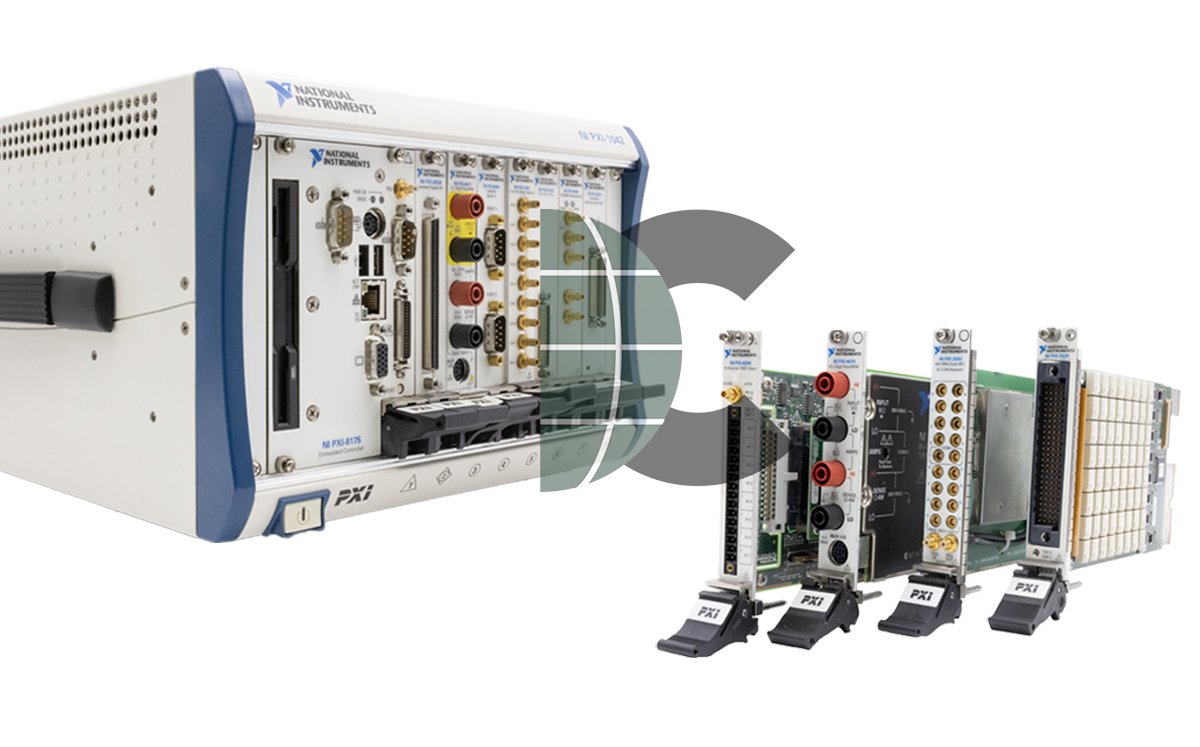PXI-8420-2
National Instruments
PXI-8420-2
National Instruments

Description
The PXI-8420/2 by National Instruments is a highly efficient and reliable interface specifically designed for PXI systems. With its two ports, wide baud rate range, and optimized power requirements, it provides a seamless RS-232 Serial Interface solution for various applications.
The PXI-8420/2, manufactured by National Instruments, is a highly efficient and reliable interface designed specifically for PXI systems. Its exceptional capabilities make it an ideal choice for various applications that require a seamless RS-232 Serial Interface. One of the standout features of the PXI-8420/2 is its two ports, which allow for multiple devices to be connected simultaneously. This enables the user to connect different devices without having to disconnect and reconnect each time, saving time and effort. The baud rate range of the PXI-8420/2 is also noteworthy, offering a wide range for transmitting and receiving data. Ranging from 57 b/s to 2 Mb/s, this interface provides excellent flexibility for data transfer requirements. Furthermore, the baud rate accuracy is within 1%, ensuring reliable and accurate data transmission. In terms of power requirements, the PXI-8420/2 is designed to operate efficiently within specific parameters. It typically requires +5 VDC and consumes around 100 mA, with a maximum consumption of 150 mA. Additionally, it requires +12 VDC and typically consumes 20 mA, with a maximum consumption of 200 mA. These power requirements ensure that the interface operates reliably without overloading the system's power supply. Overall, the PXI-8420/2 by National Instruments is a remarkable interface designed to meet the demands of PXI systems. With its two ports, wide baud rate range, and optimized power requirements, it provides a reliable and efficient solution for RS-232 Serial Interface needs.
| Made By | National Instruments |
|---|---|
| Model Number | PXI-8420/2 |
| Interface Type | RS-232 Serial Interface for PXI systems |
| Number of Ports | 2 ports |
| Baud Rate Range | 57 b/s to 2 Mb/s within 1% |
| Power Requirements | +5 VDC: 100 mA typical, 150 mA max; +12 VDC: 20 mA typical, 200 mA max |
Distribution Cache Shipping Info and Options
Shipping Carriers: Here at Distribution Cache we ship using UPS, FedEx, DHL, or TNT. In most cases we get very competitive rates based on our volume and will be happy quote shipping cost to your location upon request. We also know that many customers would prefer to ship collect on their own account numbers and welcome this option.
Shipping Blind: We recognize that many of our customers intend to re-sell the product to their end user. We respect our customer’s relationships with their clients and offer blind shipping as an option to ensure that the package arrives in the most clandestine way possible.
Shipping Process: We take pride in the way we package your order and spare no cost in making sure that it arrives safely at your facility. In the case of new parts, we are always sure to package the factory box inside another larger box for safe transit. For reconditioned parts we often use Distribution Cache customized packaging that is specially made to protect the products from the bumps and falls present during shipment.
Shipping Options:
Next Day Air Early AM - This service is the fastest overnight delivery option available. For most locations the package will be guaranteed by 8:30AM.
Next Day Air – This service guarantees delivery by 10:30AM and is the most frequently used option for overnight shipments.
Next Day Air Saver – This cost saving overnight alternative guarantees delivery by 3PM the next day.
2nd Day Air – For domestic shipments that would take 3-5 days if shipped via Ground, sometimes having the order in 2 days is a great way to go
Ground – Ground is the most inexpensive shipping option provided. Please ask if we are doing a “free domestic ground” shipping promotion on your order. We often provide free ground shipping on larger orders.
Emergency Courier – At times we can help work with a courier service to get the part to your facility during downtimes scenarios. We prefer that the customer sets up the courier but we can be there to make sure the product is handed off to the driver. Please give us a call to see if this is an option on your order.
Please Note: Products listed as “ships today” can ship same-day if an order is placed before 4PM. For larger drives and motors we ask that notification for same-day shipments be provided by 2PM at the latest. For any products listed as “ships in 3-5 days”, please give us a call to see if this can be expedited.
Question:
What is the PXI-8420/2 and who manufactures it?
Answer:
The PXI-8420/2, manufactured by National Instruments, is a highly efficient and reliable interface specifically designed for PXI systems. It enables seamless RS-232 Serial Interface communication.
Question:
How many ports does the PXI-8420/2 have, and what is the advantage of this feature?
Answer:
The PXI-8420/2 has two ports, allowing multiple devices to be connected simultaneously, which saves the user time and effort by not having to disconnect and reconnect devices.
Question:
What is the baud rate range of the PXI-8420/2, and why is it significant?
Answer:
The baud rate range of the PXI-8420/2 varies from 57 b/s to 2 Mb/s, offering excellent flexibility for different data transfer requirements with an accuracy within 1%, ensuring reliable and accurate data transmission.
Question:
What are the power requirements for the PXI-8420/2?
Answer:
The PXI-8420/2 typically requires +5 VDC and consumes around 100 mA, with a maximum of 150 mA, as well as +12 VDC, consuming typically 20 mA with a maximum of 200 mA. These requirements are optimized to ensure reliable operation without overloading the system's power supply.
Question:
Why is the PXI-8420/2 considered a reliable and efficient solution for RS-232 Serial Interface needs?
Answer:
The PXI-8420/2 is considered a reliable and efficient solution for RS-232 Serial Interface needs because of its dual-port feature, wide baud rate range, and optimized power requirements which meet the demands of PXI systems.
